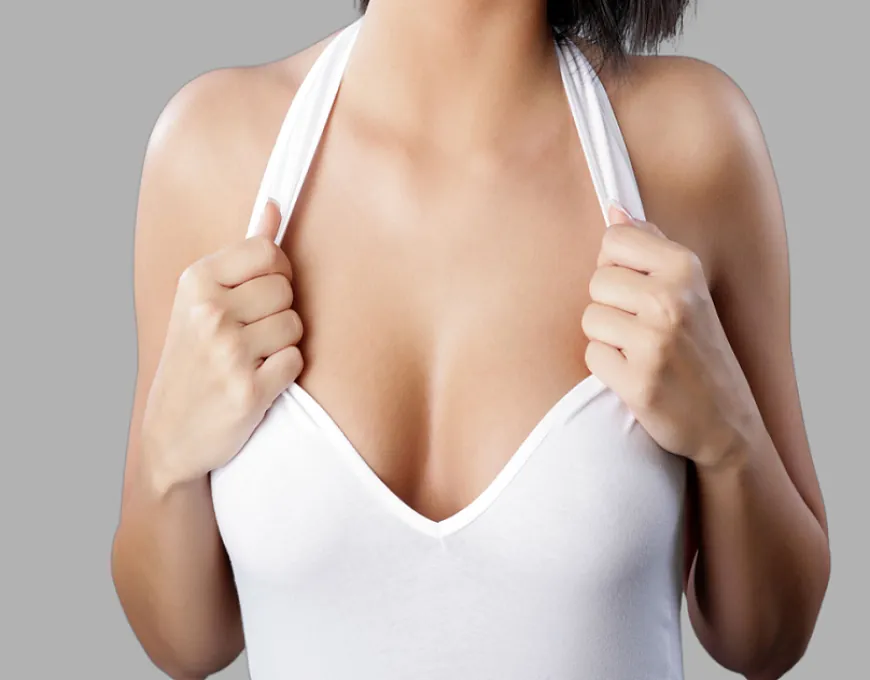Breast Lift Techniques: Which Method is Best for You?
A breast lift, also known as a mastopexy, is a surgical procedure designed to improve the shape and size of your breasts.

A breast lift, or mastopexy, is a surgical procedure designed to elevate and reshape sagging breasts. As women age, undergo pregnancy, or experience weight fluctuations, the breasts can lose their youthful firmness and position. A breast lift can restore a more youthful appearance, enhance self-confidence, and improve the overall silhouette. However, the success of the procedure often depends on the technique chosen, which varies based on individual anatomy, goals, and preferences. In this article, we will explore various Breast lift Dubai, helping you determine which method may be best for you.
Understanding Breast Lift Surgery
Before diving into the specific techniques, it’s essential to understand the fundamentals of breast lift surgery. The primary goal of a breast lift is to remove excess skin, tighten the surrounding tissue, and reposition the nipple and areola to a more youthful height. The procedure can also be combined with breast augmentation for those seeking increased volume.
Factors Influencing Technique Selection
Choosing the right breast lift technique involves several factors:
-
Degree of Sagging: The amount of sagging will influence the technique used. Mild sagging may require less invasive methods, while significant sagging may necessitate more extensive procedures.
-
Breast Size and Shape: Larger breasts may need more support and lifting, which can affect the choice of technique.
-
Skin Elasticity: The quality of your skin plays a critical role in determining how well your breasts will respond to lifting.
-
Desired Outcome: Your personal aesthetic goals, including the desired breast shape and size, will guide the technique selection.
-
Surgeon’s Recommendation: An experienced surgeon will assess your unique situation and recommend the most suitable technique.
Common Breast Lift Techniques
1. Anchor Technique (Inverted T)
The anchor technique, also known as the inverted T or keyhole method, is one of the most common approaches for breast lifts, especially for those with significant sagging. This method involves three incisions:
- Around the Areola: A circular incision is made around the nipple to allow for repositioning.
- Vertical Incision: A straight incision runs from the bottom of the areola to the breast crease.
- Horizontal Incision: A curved incision is made along the breast crease.
Pros:
- Suitable for significant sagging and reshaping.
- Provides maximum lift and volume.
- Allows for the removal of excess skin.
Cons:
- More extensive scarring due to the multiple incisions.
- Longer recovery time compared to less invasive techniques.
2. Lollipop Technique (Vertical Lift)
The lollipop technique is a popular choice for those with moderate sagging. This method uses two incisions:
- Around the Areola: Similar to the anchor technique, a circular incision is made around the nipple.
- Vertical Incision: A straight incision runs from the bottom of the areola to the breast crease.
Pros:
- Less scarring than the anchor technique.
- Provides a good lift for moderate sagging.
- Shorter recovery time compared to the anchor technique.
Cons:
- May not be suitable for those with significant sagging.
- Limited skin removal compared to the anchor technique.
3. Donut Technique (Peri-Areolar Lift)
The donut technique, also known as the periareolar lift, involves a single circular incision around the areola. This method is best for those with mild sagging and is often preferred for women seeking a less invasive option.
Pros:
- Minimal scarring, as the incision is hidden around the areola.
- Short recovery time.
- Suitable for minor lifting and reshaping.
Cons:
- Limited lifting capability; not ideal for moderate to severe sagging.
- May not provide significant volume changes.
4. Crescent Lift
The crescent lift is a less common technique that involves a small incision along the upper half of the areola. This method is best for women who have minimal sagging and are looking for a subtle lift.
Pros:
- Minimal scarring, as the incision is small and hidden.
- Quick recovery time.
- Ideal for those seeking minor adjustments.
Cons:
- Limited lifting capability; not suitable for significant sagging.
- May not provide the desired results for larger breasts.
5. Scarless Breast Lift
The scarless breast lift, also known as the non-invasive breast lift, utilizes advanced techniques like ultrasound or radiofrequency to tighten the skin without traditional surgical incisions. This method is still relatively new and may not be suitable for everyone.
Pros:
- Minimal to no scarring.
- Short recovery time.
- Non-invasive approach with less risk.
Cons:
- Limited lifting capability; not suitable for significant sagging.
- Results may not be as dramatic as surgical options.
- Still undergoing research and may not be widely available.
Choosing the Right Technique for You
Selecting the best breast lift technique involves careful consideration of your individual needs, goals, and preferences. Consult with a board-certified plastic surgeon to discuss your options and determine which method is most suitable for you. Remember to ask questions, review before-and-after photos, and understand the potential risks and complications associated with each technique.
Conclusion
Breast lift techniques have evolved significantly over the years, offering a range of options for women seeking to rejuvenate their breasts. By understanding the various methods, including the anchor, lollipop, donut, crescent, and scarless breast lifts, you can make an informed decision about which technique is best for you. Remember to prioritize your health, choose a reputable surgeon, and have realistic expectations. With the right guidance and support, you can achieve the youthful, confident breasts you desire.












